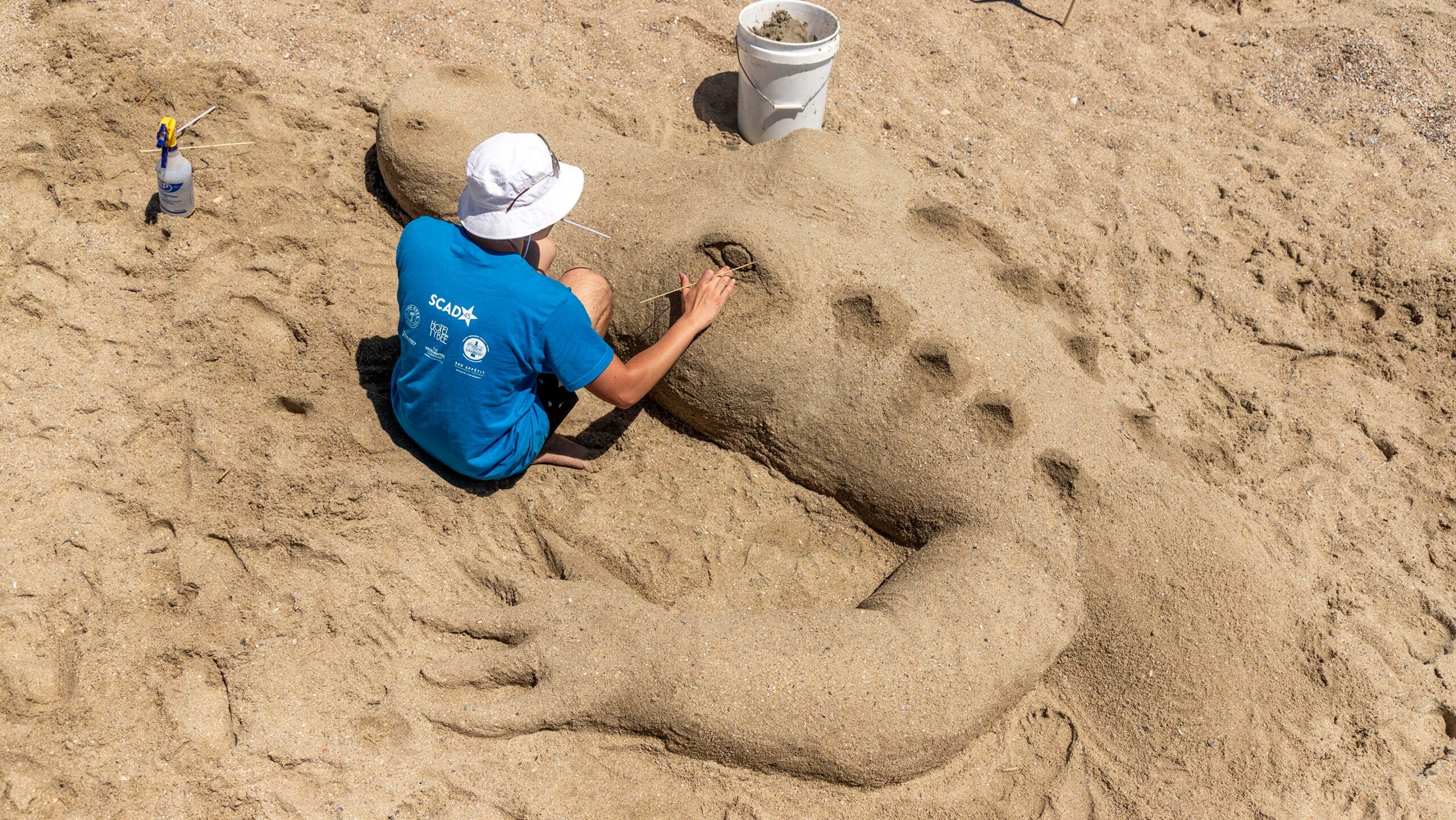Researchers said the ancient people created these petroglyphs as they were curious and interested in what the dinosaur prints represented
In 1987, some gemstone prospectors unearthed lapidaries of fascinating turquoise tourmaline crystals in the hilly mines of Paraiba, an agricultural state on the eastern tip of Brazil. And now, the city has taken researchers further back in time, by revealing an intriguing collection of dinosaur footprints juxtaposed with rock art dating more than 9000 years ago. The collection has been discovered in Serrote do Letreiro in the Sousa Basin of the state, and the corresponding research is published in Scientific Reports journal.
Transporting the time machine to the Jurassic era, the study has revealed that prehistoric hunter-gatherers in Brazil created tons of enigmatic rock art designs, called petroglyphs, next to the fossilized footprints of dinosaurs. The findings promise to provide some marvelous insights into the marriage of paleontology and archaeology offered by the uncloaking of this stunning assemblage on the outcrops of Serrote.
According to the paper, researchers first observed the petroglyphs in 1975. But it is only now that they have seen them lying in proximity to the gigantic footprint tracks of dinosaurs. They made this discovery with the aid of several brilliant drones. The tracks, they said, belong to dinosaurs from the Cretaceous Period, which ended 66 million years ago.
The researchers who discovered these marks think that ancient humans purposefully placed the rock carvings next to the dinosaurs’ prints, as many of the petroglyphs are a mere 2 to 4 inches from the fossilized marks and some of the glyphs appear to be illustrations of the footprints, also called ichnites.
This demonstrates that people living in this period were well aware of the dinosaurs, and probably, curious about these. “The individuals who crafted the petroglyphs were acutely aware of the footprints, likely selecting the location precisely because of them,” the study’s lead author Leonardo Troiano, an archaeologist from Brazil’s National Institute of Historic and Artistic Heritage, told Live Science “It would have been impossible to overlook their presence.”
Troiano said these ancient humans were highly interested in the footprints and considered them meaningful in some way. This also goes parallel to the location of Serrote. Serrote do Letreiro, which translates to “Signpost Hill” in Portuguese, is close to the Valley of the Dinosaurs, a conservation area renowned for its hundreds of fossilized dinosaur footprints.
Troiano and his fellow researchers carried out the research with a group of middle-school students who surveyed the site in 2023. In addition to learning about the convergence of paleontology and archaeology, the students helped in the photography of the specimens. The team noted that the tracks belong to various types of dinosaurs, such as meat-eating theropods, long-necked sauropods, and two-legged ornithopods, including iguanodontian dinosaurs.
The petroglyphs uncovered were mainly carvings of circles filled with lines and other geometric strokes. These artworks are attributed to humans who lived in the region anywhere between 9,400 and 2,620 years ago. “They were small seminomadic groups of hunters and gatherers who lived in society and used objects made from stones,” Troiano said. These ancient humans made these rock carvings with two techniques; perforation and scraping, the team said.
“Perforation involves using a kind of stone hammer to create depressions on the surface, resembling stippling, while scraping entails rubbing a stone against the surface until it forms the desired engraving,” Troiano explained.
The petroglyphs undoubtedly provide important evidence to the historical population, but they also indicate the rituals and practices these people participated in, during this period. “I think rock art creation was embedded in some sort of ritual context: people gathering and creating something, perhaps utilizing some psychotropics,” said Troiano, adding further that these people were interested in “what the footprints represent.”
Affirming Troiano’s hypothesis, Jan Simek, a distinguished professor of anthropology at the University of Tennessee, Knoxville, told CNN, “The paper provides an interesting new example of how ancient people observed and incorporated fossils on the landscape into their religious experiences and interpretations.”
He said this case is another archaeological example of the “human tendency to tie the spiritual world created in the imagination to unexplained things in the world around us.” This might correlate to the Indian village along the shore of the Narmada River, where people commonly worship dinosaur fossils they call “kankar.”


